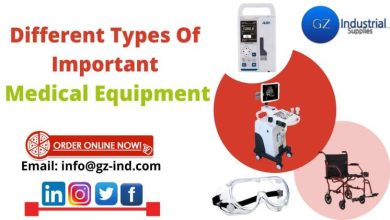The Significance and Applications of Venous Ultrasound in Scottsdale

Technological advancements in the diagnostic and imaging landscape have revolutionized patient care and treatment outcomes, for example – the venous ultrasound. It is a non-invasive imaging technique that uses sound waves within your body to visualize the veins.
Venous ultrasound, also known as venous Doppler or duplex ultrasound is a medical imaging modality that combines traditional ultrasound with Doppler technology. It utilizes high-frequency sound waves to generate real-time images of the veins, offering insights into blood flow patterns, venous structure, and potential abnormalities. Venous ultrasounds Scottsdale help the healthcare professionals at Scottsdale Vascular Clinic to assess your venous health and give treatment.
Diagnostic Applications:
- Deep Vein Thrombosis (DVT): When a blood clot forms within a deep vein it can be life-threatening if the clot travels to your respiratory organ. Venous ultrasound enables clinicians to picture the affected area and identify the presence of clots, enabling quick intervention and preventing life-threatening complications like pulmonary embolism.
- Chronic Venous Insufficiency (CVI): Venous ultrasound helps venous valve integrity evaluation as well as the overall performance of your venous system. For patients with CVI, venous ultrasound aids in identifying valve incompetence and venous reflux, guiding treatment strategies to alleviate symptoms such as leg swelling, pain, and varicose veins.
- Venous Mapping: Before certain medical procedures such as dialysis or venous access device placement, venous ultrasound is used to map out the patient’s venous anatomy. This ensures the optimal placement of devices and reduces the risk of complications.
- Venous Tumors and Abnormalities: Venous ultrasound assists in the identification and characterization of venous tumors, varicoceles (abnormal enlargement of veins within the scrotum), and other venous abnormalities. This aids in guiding treatment decisions and monitoring disease progression.
Therapeutic Applications:
- Guiding Interventional Procedures: Venous ultrasound serves as a real-time guidance tool during various interventional procedures. Surgeons and interventional radiologists use it to precisely guide the insertion of catheters, perform thrombectomies, and place stents, ensuring accurate placement and minimizing risks.
- Monitoring Treatment Response: In cases of DVT and CVI, venous ultrasound helps monitor the effectiveness of treatment interventions. Repeat imaging allows healthcare professionals to assess clot resolution, venous valve function improvement, and overall venous health progression.
Conclusion
Venous ultrasound is an indispensable tool, as it helps Scottsdale medical professionals to accurately diagnose, treat, and manage various venous disorders. It is non-invasive, versatile, and capable of real-time imaging, so is a preferred choice for healthcare professionals to evaluate venous health. As technology continues to advance, venous ultrasound is likely to evolve further, enhancing its diagnostic precision and expanding its applications, ultimately leading to improved patient outcomes and quality of life.





